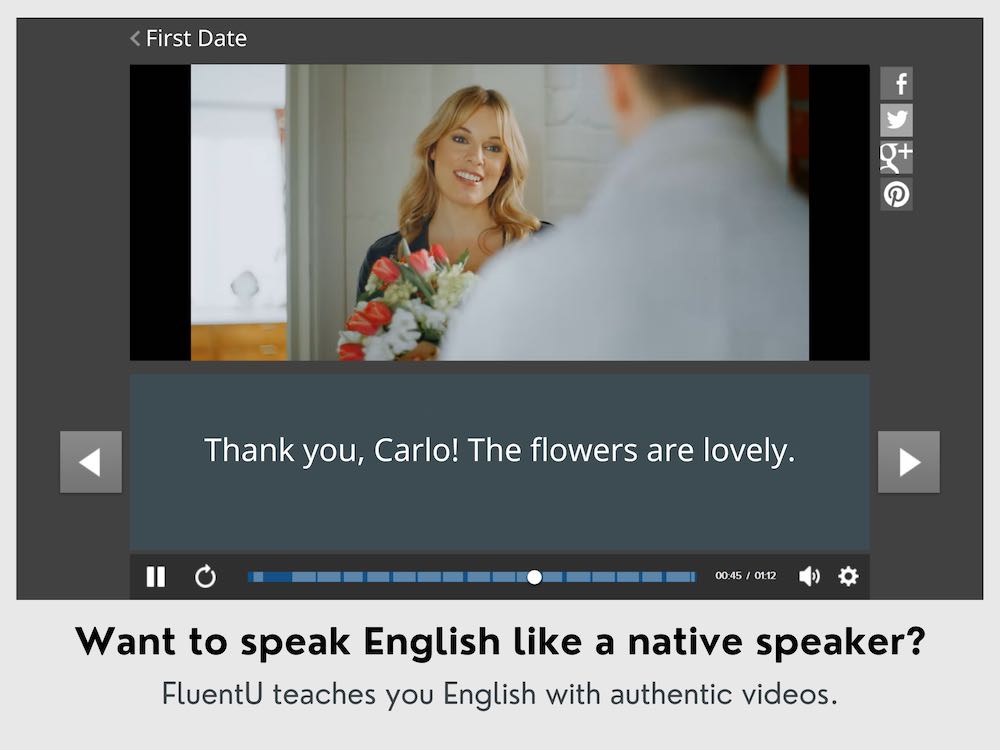How to Address People in English: The Guide to Titles and Names

Not being sure how to address someone—especially in a new language—can feel intimidating. What if you offend someone by accident? When should you use a formal term and when can you use a relaxed, informal greeting in English?
Once you learn some basic greetings, you’ll be able to address everyone in English with confidence!
Download: This blog post is available as a convenient and portable PDF that you can take anywhere. Click here to get a copy. (Download)
Addressing People Formally
- Sir
— A formal term for an adult male and could either be someone you know or a stranger.
For example: “Would you like a glass of water?”
“Yes, sir, thank you!” - Ma’am
— A formal term for an adult female and could either be someone you know or a stranger.
For example: “Did you have a good day?”
“Yes, ma’am, how about you?” - Mr.
+ Last Name — Use this formal greeting for men.
For example: “Good morning, Mr. Clark!” - Mrs.
+ Last Name — Traditionally, this is the formal greeting for married or widowed women.
For example: “How are you, Mrs. Smith?” - Ms.
+ Last Name — This is used for when you don’t know the marital status of the woman you’re addressing. This one is very common as it’s quite neutral.
For example: “May I come in, Ms. Davis?” - Miss
+ Last Name — A formal greeting used for an unmarried woman. In some regions in the US, you can also follow “miss” with the person’s first name.
For example: “Hello, Miss Young!” or “Hello, Miss Nancy!”
When you’re in a professional situation, it’s best to use formal greetings. As you get to know your coworkers, you might start to use informal terms or even a nickname if you become close friends. However, you should always use formal phrases with your superiors and clients as a sign of respect.
You can also check out this lesson from our YouTube channel to see how to use these titles at work with examples from popular shows and movies.
Addressing People by Their Title
- Doctor
+ Last Name — Use this greeting if you’re addressing a medical doctor or someone who holds a Ph.D. (the highest level of education).
For example: “See you tomorrow, Dr. Jones!” - Professor
+ Last Name — In a university setting, most professors are greeted with this term instead of Mrs., Ms., Miss or Mr. It can be used with any gender.
For example: “I have a class with Professor Williams today.” - President
+ Last Name — Formal greeting for the leader of an organization or the President of the United States.
For example: President Biden - Senator
+ Last Name — Formal greeting for a male or female member of the US Senate.
For example: Senator Alexander - Representative
+ Last Name — Formal greeting for a male or female member of the US House of Representatives.
For example: Representative Pelosi - Councilman
+ Last Name — Formal greeting for a male member of a city council.
For example: Councilman Davis - Councilwoman
+ Last Name — Formal greeting for a female member of a city council.
For example: Councilwoman Brown - Officer
+ Last Name — Formal title for a male or female police officer.
For example: Officer Jones - Father
+ Last Name/First Name — Formal title for a Catholic priest. In many cases, this person can be referred to by their last name or their first name.
For example: Father Smith - Pastor
+ Last Name/First Name — Formal title for a Christian minister. Like the priest, pastors can be referred to by their last name or first name.
For example: Pastor Matthew - Rabbi
+ Last Name — Formal title for a Jewish spiritual leader.
For example: Rabbi Williams
If you’re addressing an authority figure, you should always use a formal greeting. Keep in mind that certain professions have their own titles. Often when addressing a doctor or professor you should use these terms even if they’re your colleagues.
Typically, you should continue to use the formal greeting as a sign of respect even if you develop a relationship with the authority figure. However, if the authority figure is someone you see on a very regular basis, such as a doctor or your child’s teacher, they might allow you to address them with an informal greeting.
To be safe, you should only switch to an informal address if the person specifically asks you to.
Addressing People in Emails
- Dear
+ Title + Last Name — Use this formal address in professional emails when addressing someone with a specific title.
For example: Dear Mr. Smith, Dear Dr. Johnson - Dear + First Name —This is for business emails when the relationship is somewhat formal, but you’re on a first-name basis with the recipient.
For example: Dear John - To whom it may concern — This one is for when you don’t know the specific recipient’s name, often used in cover letters or formal inquiries.
- Dear Sir/Madam — Use this formal greeting when you don’t have a specific contact person’s name, but you want to maintain a level of formality. It’s similar to the previous one, but a little more direct.
- Hello + First Name — This is suitable for professional emails where the tone can be a bit more casual, but you still want to maintain a level of respect.
For example: Hello Sarah - Hi + First Name — Use this one in casual or friendly emails when you have a more informal relationship with the recipient.
For example: Hi Alex - Hello everyone — This is a good one for group emails in a professional or more formal context, conveying a warm and inclusive tone.
- Hi all — This greeting is appropriate for emails addressed to a group of people in a casual or team setting.
When you need to address someone in writing, think about your relationship with the individual. Is this a professional or personal interaction? In general, you should use the same greeting you would use in person.
Also, consider the method of writing you’re using. Handwritten letters are very different from business emails or social media interactions.
Professional situations—even in writing—call for formal greetings. However, social media and written letters to a loved one can be addressed with informal signs of affection.
Addressing Strangers in Public
- Excuse me, Sir — A polite way to get a male stranger’s attention.
- Excuse me, Ma’am — A polite way to get a female stranger’s attention.
- Sorry, Sir — A polite way to get a male stranger’s attention.
- Sorry, Ma’am — A polite way to get a female stranger’s attention.
- Bud — An appropriate greeting for a dog.
- Buddy — An appropriate greeting for a dog.
Addressing a stranger in public might seem confusing, but it doesn’t have to be. Since you likely won’t know if the stranger has an official title, you can simply use the formal greetings of “sir” or “ma’am.” If you need to get the stranger’s attention, add “excuse me” or “sorry” before the greeting to be polite.
If you’re speaking to a stranger at a dog park, you might also want to address their puppy. Signs of affection are generally appropriate when speaking to animals. Check out the video for more on how to talk to a stranger!
Addressing People as a Group
- Ladies and gentlemen — This formal greeting is for professional or public settings when addressing a formal audience.
- Distinguished guests — This greeting when addressing a group that includes notable or esteemed individuals.
- Hello everyone — This is a neutral and inclusive greeting in casual or informal settings.
- Hi guys — This is a casual and familiar greeting suitable for informal settings among friends, peers or a group where the tone is relaxed.
Addressing a group or crowd in English can vary based on the formality of the situation and your desired tone. If you’re unsure about the appropriate level of formality, it’s usually better to be more formal, especially in professional or public settings.
Addressing Friends and Family Members
- Honey — An informal greeting used by adults to address children or as a pet name used in a romantic relationship.
- Sweetie — Another informal greeting used by adults to address children or as a pet name used in a romantic relationship.
- Baby — This informal greeting is most commonly used in romantic relationships, but it can also be used by adults to address children.
- Buddy — You can use this one to refer to a male friend, child or even a pet.
- Hun — This is typically used to refer to a female friend or child. However, it can also be used to refer to your romantic partner.
When speaking with your friends or family members, you can typically use informal greetings. Nicknames and terms of endearment are often used as a sign of affection. Of course, the terms you use will depend on the relationship you have with the person.
Also, if you’re introduced to your friend’s parents, you should use formal greetings until they mention that informal greetings are fine. Have a look at the following video to see these terms in action.
How to Address Someone When You’re Not Sure?
Overall, formal greetings are used as a sign of respect while informal greetings show that you’re familiar and comfortable with the person. Using the correct greeting will help you make a great first impression.
But what should you do if you really don’t know how to address someone? You can always just ask!
Here are some ways you can ask how to address someone.
- How would you like me to address you?
- What’s your preferred way of being addressed?
- What should I call you?
- Should I refer to you as Dr. Smith?
- Do you mind if I call you Jane?
- Can I call you Samantha?
If you’re the one being asked, you can say the following.
Essential Etiquette Tips for Addressing People
As you start to practice greetings, make sure you understand some basic etiquette tips. These apply for any setting where you need to address people.
- When in doubt, use formal language. If you’re unsure whether to use a formal or informal greeting, it’s best to stick to the formal. This is polite and will be less offensive than using an informal greeting to address someone older than you or an authority figure.
- Eye contact and handshakes. When you first meet someone, it’s polite to make eye contact, offer a handshake (especially if it’s two men) and address the person with a formal greeting.
- Learn cultural differences. The standards for addressing people change depending on where you are. Spend some time learning what’s appropriate in the area you live or are visiting. For example, the American South uses formal terms even when addressing friends and family if they’re older. They might also incorporate “sir” and “ma’am” into greetings more often than in other parts of the country.
You can learn more cultural differences by watching videos from different parts of the world. For instance, use the large variety of videos on FluentU to familiarize yourself with English from native English speakers.
FluentU takes authentic videos—like music videos, movie trailers, news and inspiring talks—and turns them into personalized language learning lessons.
You can try FluentU for free for 2 weeks. Check out the website or download the iOS app or Android app.
P.S. Click here to take advantage of our current sale! (Expires at the end of this month.)

Don’t be too hard on yourself if you get these confused every once in a while! You’re learning these different phrases. Fluency is a process and addressing someone in English, even if you choose the wrong term, shows that you’re making an effort to learn the language.
Just remember you can always use a formal greeting. This is a safe and polite option. The individual will be impressed and will let you know if you should switch to an informal title in the future. Good luck!
Download: This blog post is available as a convenient and portable PDF that you can take anywhere. Click here to get a copy. (Download)
And One More Thing...
If you like learning English through movies and online media, you should also check out FluentU. FluentU lets you learn English from popular talk shows, catchy music videos and funny commercials, as you can see here:
The FluentU app and website makes it really easy to watch English videos. There are captions that are interactive. That means you can tap on any word to see an image, definition, and useful examples.
For example, when you tap on the word "searching," you see this:
Learn all the vocabulary in any video with quizzes. Swipe left or right to see more examples for the word you’re learning.

FluentU helps you learn fast with useful questions and multiple examples. Learn more.
The best part? FluentU remembers the vocabulary that you’re learning. It gives you extra practice with difficult words—and reminds you when it’s time to review what you’ve learned. You have a truly personalized experience.
Start using the FluentU website on your computer or tablet or, better yet, download the FluentU app from the iTunes or Google Play store. Click here to take advantage of our current sale! (Expires at the end of this month.)











